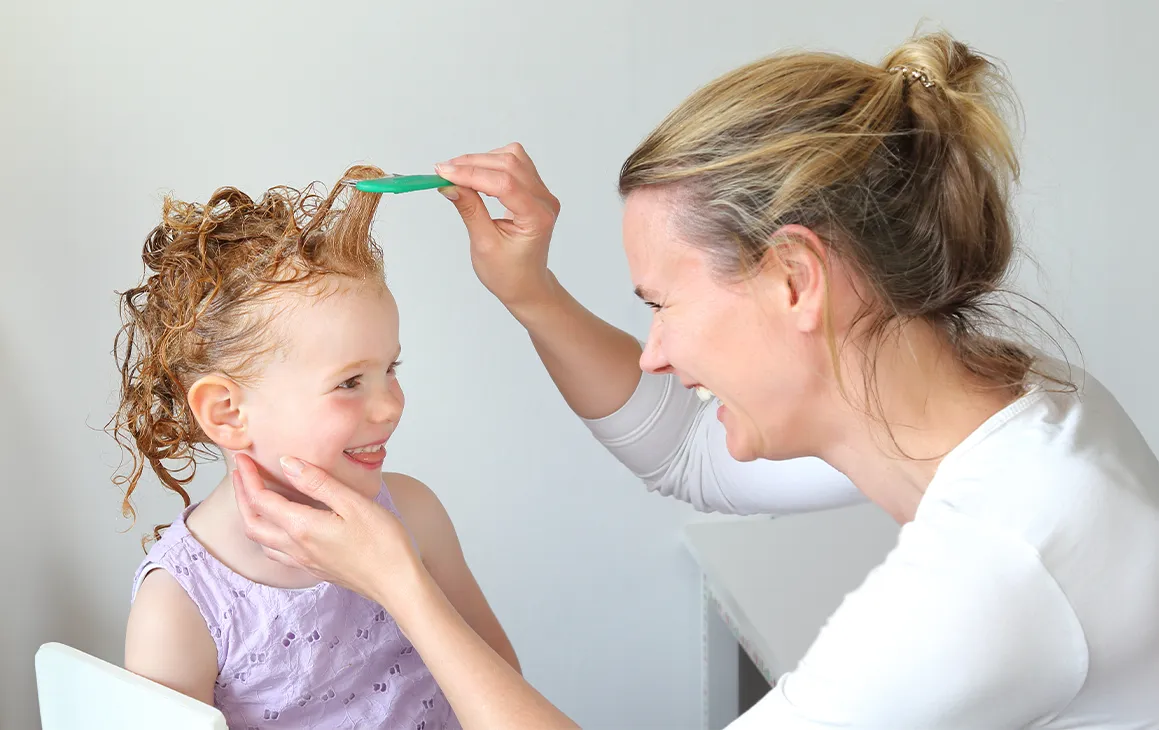Head lice are infamous for many things – outbreaks and causing endless bouts of itching, especially in groups of schoolchildren, and all kinds of misconceptions.
One misconception that somehow persists is that lice can jump from one head to another, which they cannot. However, the truth is that they can only crawl, so direct, head-to-head contact with an infected person is often a common way to get lice. Another untrue idea that is still believed by a lot of people is that head lice affect unhygienic people, but there is no relation to cleanliness. Head lice do not discriminate and can affect anyone! [1]
To do away with more such stigma-causing untruths, here are some facts about headlice.
- They are tiny and wingless insects
- They can crawl and do not jump or fly
- They’re the size of a sesame seed and can be difficult to see
- Usually, they are greyish brown in color
And here are some basic facts about nits, which are the eggs of the louse:
- Nits attach to the hair shaft very close to the scalp
- They’re the size of a grain of sand
- Usually brown in color when alive, white when dead or hatched
- They do not come off easily and hatch in about seven days.
- Nits more than 1 cm from the scalp are dead or hatched or may be dandruff. [2]
Coming to infestations, here’s what you need to know:
- An infestation with lice is called pediculosis and usually involves less than 10 live lice
- Infested children usually carry less than 20 mature head lice and often less than 10 at a time, which live 3 to 4 weeks if left untreated
- Itching occurs if the person with lice becomes sensitized to components in the saliva injected as the louse feeds
- In cases with heavy infestations, secondary bacterial infection of the scalp may occur.
Here’s what you need to know about transmission
- Lice do not hop or fly, but can crawl rapidly, at around 23 cm per minute under natural conditions
- Head lice are spread mainly through direct head-to-head, or hair-to-hair contact
- Studies about the role of fomites are not conclusive (fomites are objects or materials which are likely to carry infection such as clothes, utensils, and furniture). Some studies suggest that pillowcases present only a small risk, while in the classroom, carpets pose no risk [3]
Here is a treatment option to treat head lice
In such a scenario, you can trust Zap®. Clinical studies have been performed repeatedly using Zap®, both inside and outside the laboratory, and Zap® was also tested on infested subjects with up to 92% treatment effectiveness rate. [4] Zap® is also easy to use – you just need to follow five of these simple steps.
Step 1 – Detection
Use the Zap® comb to check for the presence of head lice, preferably in a room with good light as lice can be difficult to see.
Step 2- Application
Carefully spray Zap® all over the hair until it is lightly wetted. Ensure you treat the whole length of the hair as they may try to avoid the spray. Thoroughly, massage the lotion into the hair and scalp for a minute or so to ensure they are completely coated. The lotion should be left on for at least 15 minutes.
Step 3 – The Wash
After the fifteen minutes have passed, wash the hair as normal
Step 4 – The Cleanse
In this stage, we use the Zap® comb to remove the lice and eggs. To ensure you get all of them, the hair should be detangled with a regular comb first, towel-dried, and then divided into 4 sections: from the forehead to the nape and then across the crown from ear to ear. Each section should be divided into much smaller strands so that you can see the scalp. Then, starting right at the scalp, pass the Zap® comb right along the length of the hair. As you complete each strand, push the hair to one side. After combing each strand, wipe off any lice and eggs found onto a tissue. You will have to do this for all four sections. If multiple people are infested, then after combing each person's hair, it’s best to wash the comb to avoid re-infestation.
Step 5 – Repeat Treatment 9 days later
As it is difficult to remove all the eggs with the first treatment, a second application is necessary after 9 days when any remaining eggs will have hatched into lice, therefore it’s advisable to repeat Steps 2-4 nine days after the first treatment. [5]
Zap® is a registered trademark of Norwell Consumer Healthcare Inc
This product may not be right for you. Please read and follow the label before use.
References:
- CDC.gov - Source: https://www.cdc.gov/parasites/lice/head/gen_info/faqs.html
- Ottawa Public Health - https://www.ottawapublichealth.ca/en/professionals-and-partners/resources/Documents/Educators/head_lice_en.pdf
- Canadian Pediatric Society - https://www.ncbi.nlm.nih.gov/pmc/articles/PMC2724133/
- Oxford Academic - https://academic.oup.com/pch/article/23/1/e18/4860349
- Zap® website - https://www.zaplicenotkids.com/discover-zap#efficacy



